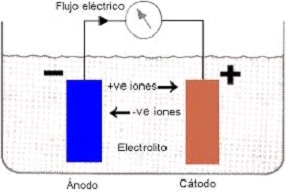Bienvenida/o a la POLÍTICA DE COOKIES de la página web de la entidad ROVIRAWEB, donde te explicaremos en un lenguaje claro y sencillo todas las cuestiones necesarias para que puedas tener el control sobre ellas en base a tus decisiones personales.
¿Qué son las cookies?
Una cookie o galleta informática es un pequeño archivo de información que se guarda en tu ordenador, 'smartphone' o tableta cada vez que visitas nuestra página web.
En principio, una cookie es inofensiva: no contiene virus, troyanos, gusanos, etc. que puedan dañar tu terminal, pero sí tiene cierto impacto sobre tu derecho a la protección de tus datos personales, pues recoge determinada información concerniente a tu persona (hábitos de navegación, identidad, preferencias, etc.).
Es por ello que, en base a lo establecido en la normativa aplicable (LSSI y normativa vigente de protección de datos personales), la activación de determinados tipos de cookies necesitará de tu autorización previa.
¿Para qué usamos las cookies?
Las cookies pueden ser de varios tipos en función de su finalidad: las cookies técnicas son necesarias para que nuestra página web pueda funcionar, no necesitan de tu autorización y son las únicas que tenemos activadas por defecto.
El resto de cookies pueden servir para mejorar nuestra página, para personalizarla en base a tus preferencias, o para poder mostrarte publicidad ajustada a tus búsquedas, gustos e intereses personales. Todas ellas las tenemos desactivadas por defecto, siendo necesaria tu autorización previa para su activación, que podrás dar mediante un paso tan sencillo y rápido como la marcación de una casilla en nuestro apartado CONFIGURACIÓN DE COOKIES.
¿Qué tipo de cookies utilizamos?
Cookies Técnicas
Las cookies técnicas son estrictamente necesarias para que nuestra página web funcione y puedas navegar por la misma. Este tipo de cookies son las que, por ejemplo, nos permiten identificarte, darte acceso a determinadas partes restringidas de la página si fuese necesario, o recordar diferentes opciones o servicios ya seleccionados por ti, como tus preferencias de privacidad. Por ello, están activadas por defecto, no siendo necesaria tu autorización al respecto.
A través de la configuración de tu navegador, puedes bloquear o alertar de la presencia de este tipo de cookies, si bien dicho bloqueo afectará al correcto funcionamiento de las distintas funcionalidades de nuestra página web.
Cookies de Análisis
Las cookies de análisis nos permiten estudiar la navegación de los usuarios de nuestra página web en general (por ejemplo, qué secciones de la página son las más visitadas, qué servicios se usan más y si funcionan correctamente, etc.).
A partir de la información estadística sobre la navegación en nuestra página web, podemos mejorar tanto el propio funcionamiento de la página como los distintos servicios que ofrece. Por tanto, estas cookies no tienen una finalidad publicitaria, sino que únicamente sirven para que nuestra página web funcione mejor, adaptándose a nuestros usuarios en general. Activándolas contribuirás a dicha mejora continua.
Puedes activar o desactivar estas cookies marcando la casilla correspondiente, estando desactivadas por defecto.
Cookies de Funcionalidad y Personalización
Las cookies de funcionalidad nos permiten recordar tus preferencias, para personalizar a tu medida determinadas características y opciones generales de nuestra página web, cada vez que accedas a la misma (por ejemplo, el idioma en que se te presenta la información, las secciones marcadas como favoritas, tu tipo de navegador, etc.).
Por tanto, este tipo de cookies no tienen una finalidad publicitaria, sino que activándolas mejorarás la funcionalidad de la página web (por ejemplo, adaptándose a tu tipo de navegador) y la personalización de la misma en base a tus preferencias (por ejemplo, presentando la información en el idioma que hayas escogido en anteriores ocasiones), lo cual contribuirá a la facilidad, usabilidad y comodidad de nuestra página durante tu navegación.
Puedes activar o desactivar estas cookies marcando la casilla correspondiente, estando desactivadas por defecto.
Cookies de Publicidad
Las cookies de publicidad nos permiten la gestión de los espacios publicitarios incluidos en nuestra página web en base a criterios como el contenido mostrado o la frecuencia en la que se muestran los anuncios.
Así mismo, nos permiten obtener información basada en la observación de tus hábitos y comportamientos de navegación en la web, a fin de poder mostrarte contenidos publicitarios que se ajusten mejor a tus gustos e intereses personales.
Por tanto, activando este tipo de cookies, la publicidad que te mostremos en nuestra página web no será genérica, sino que será más útil, menos repetitiva, y estará orientada a tus búsquedas, gustos e intereses, ajustándose por tanto exclusivamente a ti.
Puedes activar o desactivar estas cookies marcando la casilla correspondiente, estando desactivadas por defecto.
Más información
Si quieres más información, puedes consultar la 'Política de cookies' completa, disponible en diferentes enlaces de nuestra página web.
